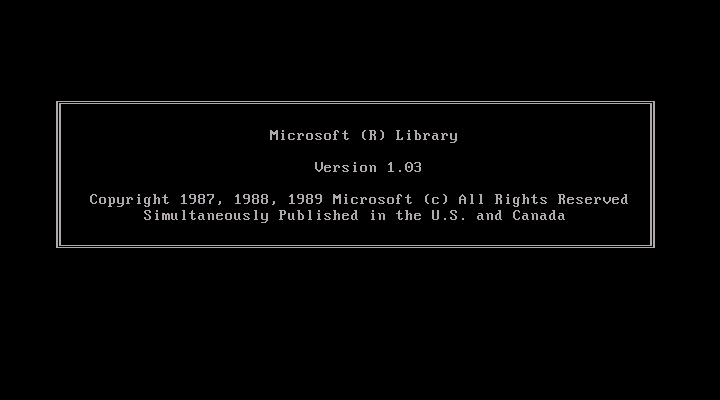Microsoft Programmers Library 1.3
 Microsoft Programmers Library 1.3
Microsoft Programmers Library 1.3
WinWorld is an online museum dedicated to providing free and open access to one of the largest archives of abandonware software and information on the web.
 Microsoft Programmers Library 1.3
Microsoft Programmers Library 1.3
WinWorld is an online museum dedicated to providing free and open access to one of the largest archives of abandonware software and information on the web.
Comments
As mentioned in the forum, I've been able to use such older ISO files directly inside a VM (Windows NT 4 in this case) running an old copy of Clone CD (version 4.1.0.1 from the year 2002) that implements its own virtual CD drive inside the VM. This was after having such an ISO fail to be recognized as such under modern copies of PowerISO or WinRAR, or indeed the VMWare driver (all of which will usually read anything).
Update - You can also mount an old format ISO'd CD like this directly using (I suspect) any recent version of ImDisk on Windows 7 (and later, no doubt). ImDisk is pretty brilliant like that.
PowerISO, and modern WinRAR or 7zip will all choke on it as soon as you attempt to even open it. ImDisk will, however, open it and give it a drive letter "on the fly" and - as an added bonus - will correctly interpret the CD's content.
So you don't have to go as far as installing old versions of CloneCD on your old Operating System VMs just yet, (although that is still an additional option, obviously), you can simply use ImDisk on your real OS. And then you can simply "network-share" that ImDisk drive to anything that needs access.
It appears that both Oracle's VirtualBox and VMware handle these old ISOs as virtual CDs fine, too. Not sure what originally went wrong with VMware when I previously tried it, but it has decided to work now. Maybe I was using a "too modern" guest OS in the VM?
Stop Press: Yep, comfirmed: I was. Whilst my Windows NT4 guest could work the virtualised CD via VMware fine, my Windows XP guest under VMware choked (showed an apparently empty ISO). I'm guessing that will also be true if the CD were virtualised using VirtualBox. It isn't the emulator thats the problem in these two cases - it is the guest not understanding the data on the CD itself. So time to install CloneCD on my Windows XP VM and junk the PowerISO on there (which also choked). Or perhaps keep PowerISO as a DVD-drive emulator, and create an additional virtual drive with CloneCD as an emulator of those simple old-style CDROM drives.
Incidentally, the real beauty of using virtual media-drive providers entirely inside the guest OS is that you can then use full-screen front-ends like WMware-KVM without stressing over the fact that there's no "insert CD" menu via that front-end. And that approach also works for other emulators (like PCE) that make media insertion a pain.
The VMware-KVM specifically is also nice to use because it handles the guest switching between DOS and Windows like a real PC - everything is full-screen scaled without any configuration effort. Plus VMware-KVM allows you to page through all your connected guest VMs (and the local host) with a single common keystroke. And the icing on the top is that VMware-KVM is a lightweight, fast, low-impact frontend for both locally installed and remote-hosted VMware VMs, handling both types in essentially the same way as far as you, the user, is concerned. So you can offload the effort of virtualizing your half-dozen guests to those old redundant PCs scattered around your house!
What more could you ask for?
BetaArchive have Microsoft Programmer's Library 1.4. PCjs also contained a Microsoft Programmer's Library 1.0 from 1988. https://www.pcjs.org/blog/2019/05/31/